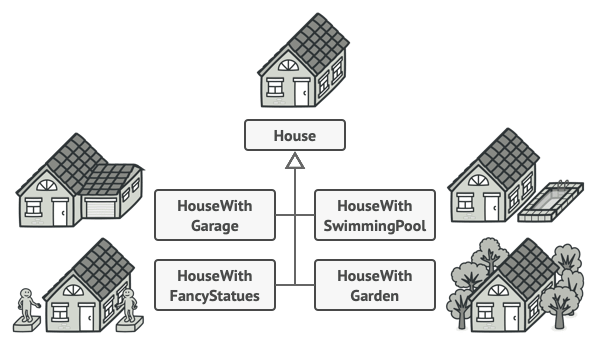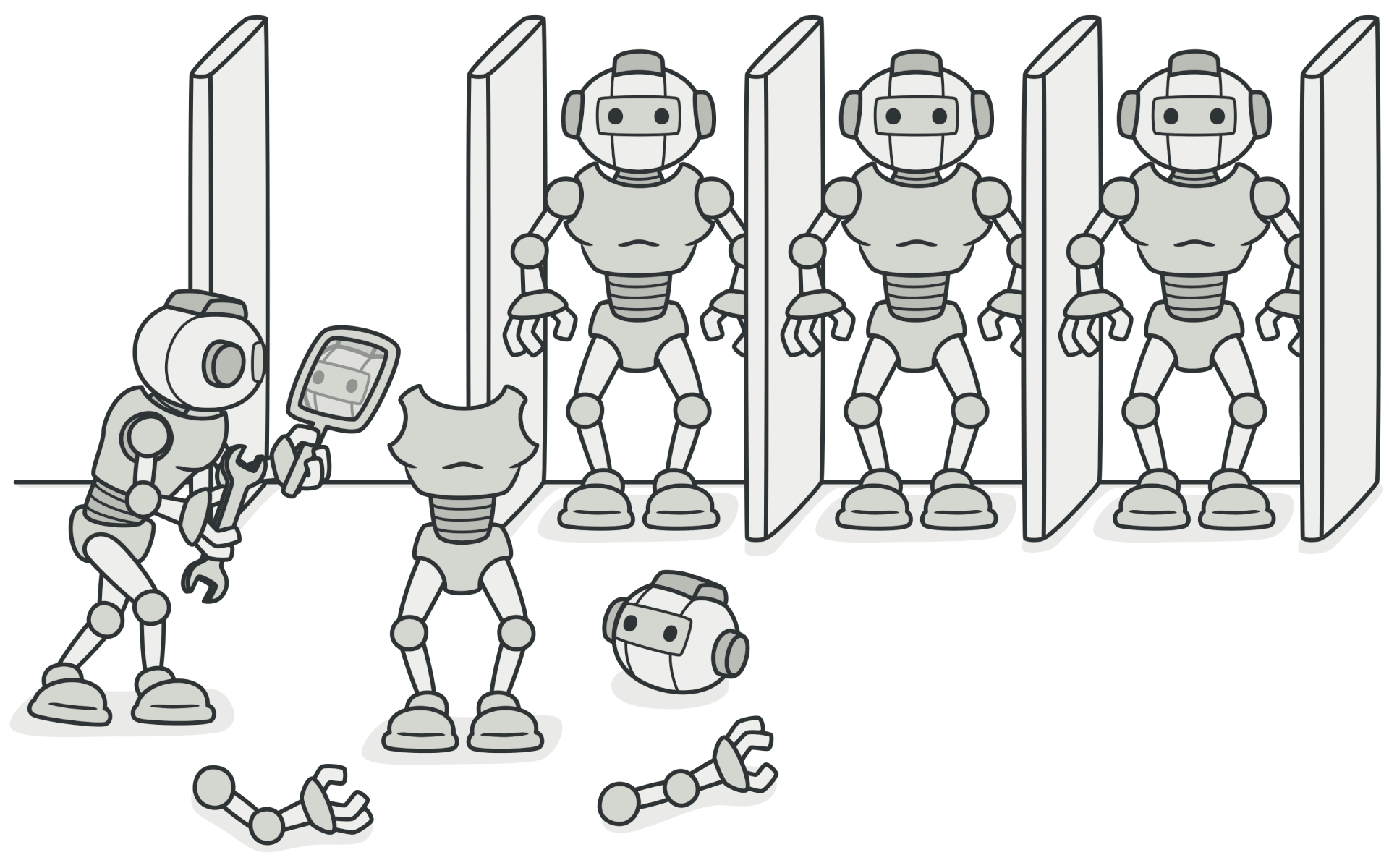
🧱 Creational Design Patterns — Explained with Real-World Scenarios
Creational design patterns are like blueprints for object creation — they help you manage how objects are instantiated, ensuring your code is flexible, scalable, and easier to maintain.
Let’s explore all five creational design patterns, not just with toy examples — but through real-world coding scenarios you’ll actually encounter as a developer.
🧩 1. Singleton Pattern — One Instance to Rule Them All
Imagine your app needs a single configuration loader that reads environment variables or a config file. This object is expensive to create and must be shared globally.
That’s the Singleton Pattern.
It ensures that only one instance of a class exists and provides a global access point to it. This is useful for shared resources like configuration managers, logging systems, or caching mechanisms.
However, because it introduces global state, Singleton can make testing and parallelism harder. Use it only when a single shared instance is truly needed.
Here’s a practical TypeScript example:
class AppConfig {
private static instance: AppConfig;
private config: Record<string, string> = {};
private constructor() {
console.log("Loading configuration...");
this.config = {
apiUrl: process.env.API_URL || "https://api.myapp.com",
env: process.env.NODE_ENV || "production",
};
}
public static getInstance(): AppConfig {
if (!AppConfig.instance) {
AppConfig.instance = new AppConfig();
}
return AppConfig.instance;
}
public get(key: string) {
return this.config[key];
}
}
// Usage
const config1 = AppConfig.getInstance();
const config2 = AppConfig.getInstance();
console.log(config1 === config2); // trueIn multithreaded systems, ensure proper synchronization or lazy initialization for thread safety.
🏭 2. Factory Method Pattern — Delegating Object Creation
Picture this: you’re building a notification system that can send emails, SMS, or push notifications. The type of notification depends on user preference.
You could use if/else blocks everywhere — or you could let the Factory Method Pattern handle object creation.
The Factory Method defines an interface for creating objects but lets subclasses decide which class to instantiate.
This makes the system open for extension but closed for modification — a core SOLID principle.
interface Notification {
send(message: string): void;
}
class EmailNotification implements Notification {
send(message: string) {
console.log(`📧 Sending Email: ${message}`);
}
}
class SMSNotification implements Notification {
send(message: string) {
console.log(`📱 Sending SMS: ${message}`);
}
}
abstract class NotificationFactory {
abstract createNotification(): Notification;
notifyUser(message: string) {
const notification = this.createNotification();
notification.send(message);
}
}
class EmailFactory extends NotificationFactory {
createNotification() {
return new EmailNotification();
}
}
class SMSFactory extends NotificationFactory {
createNotification() {
return new SMSNotification();
}
}
// Usage
const factory = new EmailFactory();
factory.notifyUser("Welcome to our app!");Use it when your system must decide object type at runtime. The pitfall? Too many small factories can increase code complexity — use wisely.
🏗️ 3. Abstract Factory Pattern — Families of Related Objects
Now, imagine you’re developing a UI library that supports both light and dark themes. Each theme has its own buttons, cards, and modals — but they must look consistent.
You can’t just create these objects randomly. You need a factory that produces families of related objects.
That’s the Abstract Factory Pattern.
It provides an interface for creating related objects without specifying their concrete classes.
interface Button {
render(): void;
}
interface Card {
display(): void;
}
class LightButton implements Button {
render() {
console.log("Rendering Light Button ☀️");
}
}
class DarkButton implements Button {
render() {
console.log("Rendering Dark Button 🌑");
}
}
class LightCard implements Card {
display() {
console.log("Displaying Light Card ☀️");
}
}
class DarkCard implements Card {
display() {
console.log("Displaying Dark Card 🌑");
}
}
interface ThemeFactory {
createButton(): Button;
createCard(): Card;
}
class LightThemeFactory implements ThemeFactory {
createButton() {
return new LightButton();
}
createCard() {
return new LightCard();
}
}
class DarkThemeFactory implements ThemeFactory {
createButton() {
return new DarkButton();
}
createCard() {
return new DarkCard();
}
}
// Usage
function renderUI(factory: ThemeFactory) {
const button = factory.createButton();
const card = factory.createCard();
button.render();
card.display();
}
renderUI(new DarkThemeFactory());Use this when you need consistent families of objects that should work together.
Pitfall: adding new product types (like sliders) requires updating all factories.
🧰 4. Builder Pattern — Constructing Complex Objects Step by Step
You’re designing a house builder app where users can configure rooms, floors, pools, and gardens.
A constructor with dozens of parameters is messy — this is where Builder Pattern shines.
The Builder lets you construct complex objects step by step. It’s especially useful when creating objects that require many configurations.
class House {
rooms: number = 0;
hasGarden: boolean = false;
hasPool: boolean = false;
describe() {
console.log(
`House with ${this.rooms} rooms, ${
this.hasGarden ? "a garden" : "no garden"
}, and ${this.hasPool ? "a pool" : "no pool"}.`
);
}
}
class HouseBuilder {
private house: House;
constructor() {
this.house = new House();
}
addRooms(n: number) {
this.house.rooms = n;
return this;
}
addGarden() {
this.house.hasGarden = true;
return this;
}
addPool() {
this.house.hasPool = true;
return this;
}
build() {
return this.house;
}
}
// Usage
const villa = new HouseBuilder().addRooms(5).addGarden().addPool().build();
villa.describe();When to use: when object construction involves optional parameters or multiple configurations.
Pitfall: increases code size due to many builder classes.
🧬 5. Prototype Pattern — Cloning Instead of Building
Consider a game engine that spawns enemy units. Each unit has complex configurations (AI, health, weapons).
Creating every unit from scratch would be expensive. So, you clone an existing prototype instead.
That’s the Prototype Pattern — it lets you copy existing objects without depending on their exact classes.
interface EnemyPrototype {
clone(): EnemyPrototype;
}
class Enemy implements EnemyPrototype {
constructor(
public type: string,
public health: number,
public weapon: string
) {}
clone(): EnemyPrototype {
return new Enemy(this.type, this.health, this.weapon);
}
}
// Usage
const baseEnemy = new Enemy("Orc", 100, "Axe");
const enemy1 = baseEnemy.clone();
const enemy2 = baseEnemy.clone();
console.log(enemy1, enemy2);Use it when creating an object is costly or complex.
Pitfall: deep vs shallow copy confusion — always ensure correct clone behavior.
🧭 Final Thoughts
Creational design patterns are the foundation for scalable software architecture.
They help you:
- Simplify complex object creation
- Avoid tightly coupled constructors
- Promote code reusability and testability
Mastering these five patterns — Singleton, Factory Method, Abstract Factory, Builder, and Prototype — gives you the tools to design cleaner, more adaptable systems.
Read more

System Design Question — Configuration Manager (Singleton) — Solution
Solution: Implement a Singleton Configuration Manager in TypeScript — problem statement, implementation, usage, and notes.

System Design Question — Resume Builder (Builder) — Solution
Solution: Implement a Resume Builder in TypeScript — problem statement, implementation, usage, and notes.

System Design Question — Enemy Cloner (Prototype) — Solution
Solution: Implement a Game Enemy Cloning System in TypeScript — problem statement, implementation, usage, and notes.